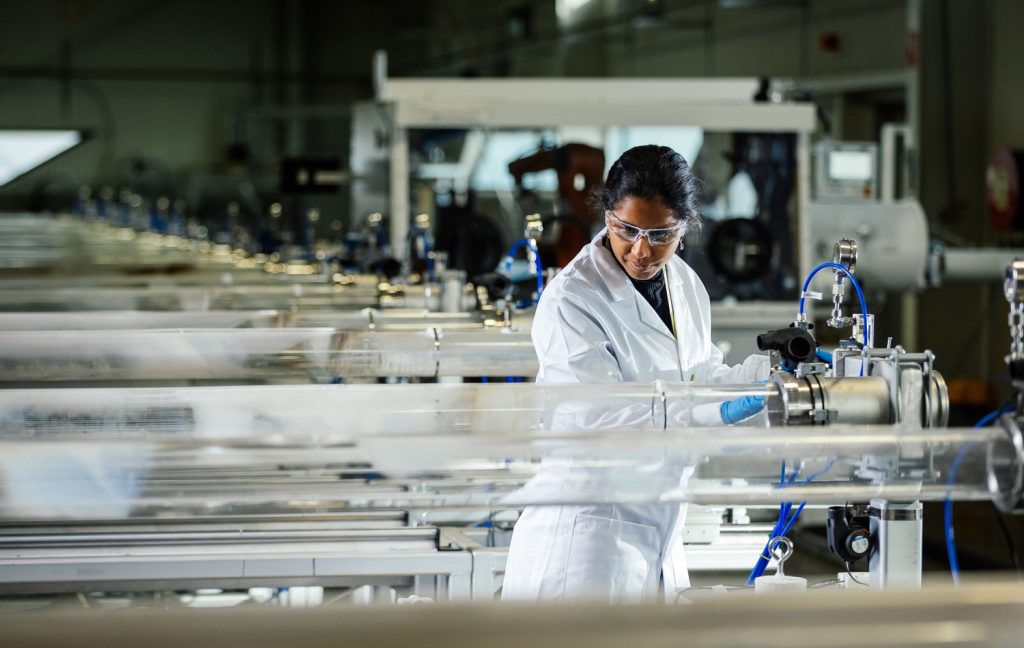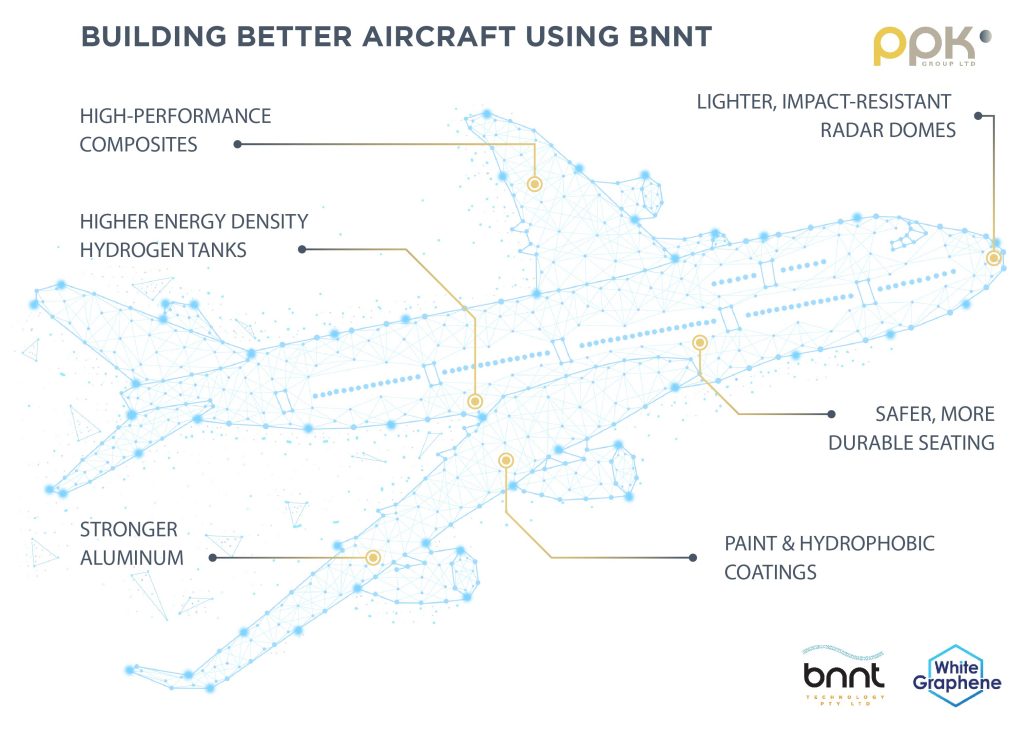Six ways boron nitride nanotubes (BNNT) can change the aviation industry forever
By Lieuwke de Jong, PPK Commercial Director
Since the Wright brothers first took flight, the aviation industry has been looking for innovative ways to go further, faster and cheaper.
This relentless approach to innovation is increasingly focused on advanced materials that can generate incremental or step-change advances to the performance of traditional materials like aluminium and polymers.
Recent advances by PPK Group in the development of White Graphene, or boron nitride nanosheets and the lowering of the production cost of BNNTs, or boron nitride nanotubes, have re-ignited the aviation sector’s interest in these nanomaterials and their potential to reshape how we fly.
BNNTs are a type of nanomaterial that consist of tubular structures made of boron and nitrogen atoms. They are similar in structure to carbon nanotubes but have unique properties that make them attractive for a range of applications.
Through its subsidiaries, BNNT Technology Limited and White Graphene Limited, PPK can produce high-quality, low-cost nanomaterials in a range of multipurpose formats, including tubes (BNNT) and sheets (white graphene).

These products can be used as an additive in small quantities to polymers, resins, fibre composites, metals, lubricants to improve their mechanical properties and other performances.
Their potential has already excited the aerospace industry, with White Graphene Limited securing up to $100,000 of funding and collaborating with Boeing to develop boron nitride nanomaterial applications in the space and aerospace industries after winning the highly-competitive Sustainability in Space Pitch Competition.
Boron nitride nanomaterial-based materials can reduce the weight of aircraft componentry while maintaining or improving structural integrity by boasting a first-class strength-to-weight ratio. Boron nitride nanomaterial-based materials offer improved resistance to environmental factors, oxidisation, corrosion and extreme temperatures, helping aircraft to fly further, safer, and more efficiently.

Radar Domes
Radomes are large dome-shaped structures in an aircraft nosecone that protect RF communication and sensing from bad weather while allowing the electromagnetic signals to be received without distortion or attenuation. Boron nitride nanomaterials which are transparent to radar can be used as an additive in the construction of radomes to improve component strength, environmental and impact resistance and reduce weight to increase fuel efficiency and payload capacity.
High-performance Coatings
BN nanosheets or White Graphene greatly improves the anti-corrosion, wear-resistance, and interfacial bonding etc. properties of coatings and paints.
Seating
Seating normally comprises about 10% of an aircraft’s operating empty weight and represents a prime target for designers trying to reduce the overall weight of an aircraft. Using boron nitride nanomaterials across all the components of seating – frames, headrests, armrests and seatbelts – could improve strength, comfort, hygiene and safety, along with reduced weight contributing to improved fuel efficiency and reduced maintenance costs.
Hydrogen Tanks
Hydrogen-powered aircraft are expected to be the next great leap forward for the sector. As a fuel, hydrogen is very light compared to kerosene – traditional aviation fuel – and packs three times as much punch per unit of mass. But onboard storage solutions can be tricky. Using boron nitride nanomaterials to build better tanks could be the solution. Boron nitride nanomaterials reduce the permeability of tanks and could minimise hydrogen gas seepage while improving strength and flexibility could provide greater safety and energy density.
Aluminium
Aluminium has been the go-to material for the aircraft manufacturing industry for decades. Boron nitride nanomaterials can potentially improve aluminium’s structural integrity and reduce weight to provide superior longevity, fuel efficiency, and reduced maintenance costs.
Composites
Composite materials have played a major part in weight reduction, and today there are three main types in use: carbon fibre-, glass-, and aramid- reinforced epoxy. Boron nitride nanomaterials have the potential to enhance their utility even further with improved structural, thermal and environmental performance.
The application of boron nitride nanomaterials in aircraft manufacturing will also help support the industry’s transition to a low-carbon model and help them play their part in meeting the challenges of decarbonization.
Many of these potential applications and the benefits are still in their infancy, but have been made infinitely more achievable by PPK’s investment in people, technology and equipment to produce high-quality, low-cost boron nitride nanomaterials in various formats.
